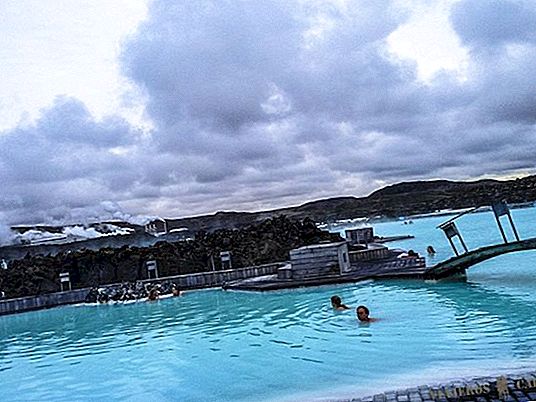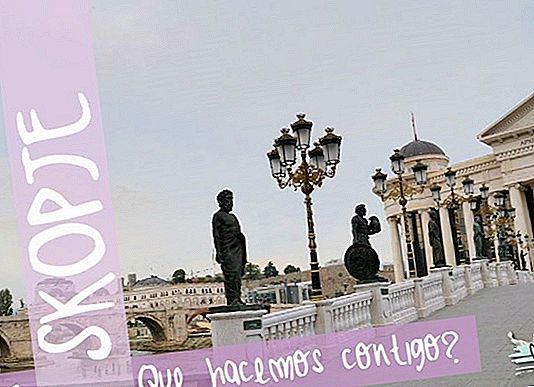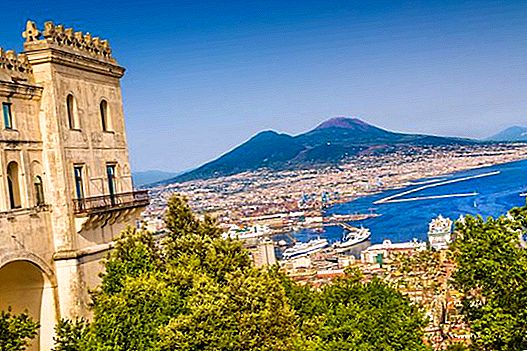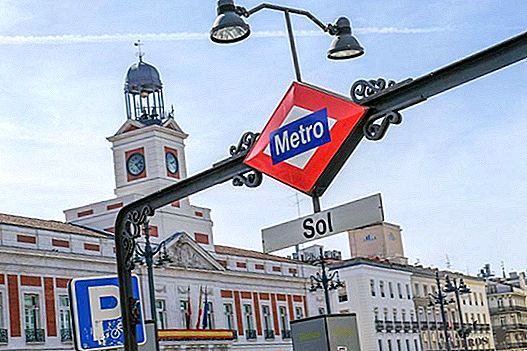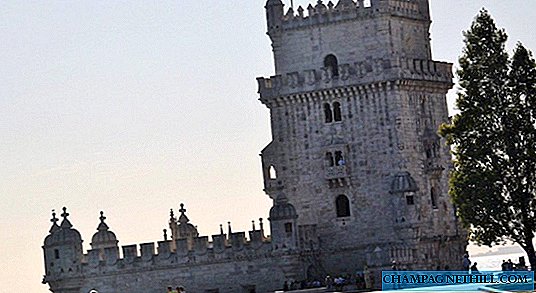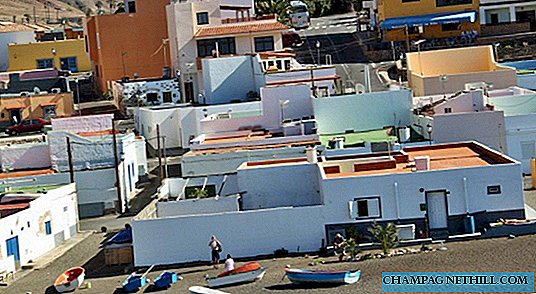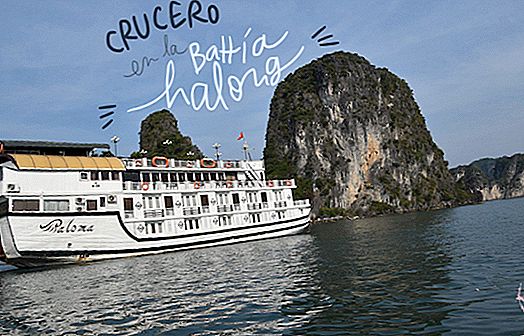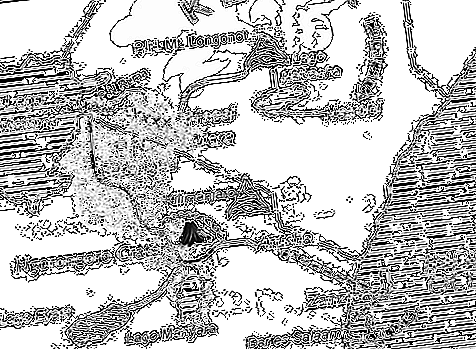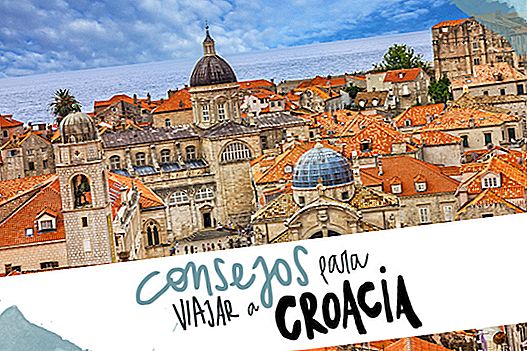
Croatia is one of our favorite countries for several reasons: it has super interesting and beautiful cities like Split, Dubrovnik or Pula, charming villages, natural parks where you can enjoy the power of nature, beaches that have nothing to envy the Caribbean and a gastronomy that has managed to fuse Balkan flavors with Italian recipes. So if you have chosen Croatia as your next destination, we can only tell you that you are right! And to help you plan the trip, in this post we will give you a few tips for traveling to Croatia (and not screw it up).
The first thing is to know what it is the best time to travel to Croatia. For the moment we have visited Croatia twice: the first at the end of September and the second at the end of July. Throughout most of the year, the country enjoys good weather and removing the winter months where the temperature collapses, the rest of the year seems very good time to visit the country. Now, if you ask us what is the best time to travel to Croatia we would tell you that the months of May, September and October. We would avoid the summer months since, especially the coast, is usually crowded.
How many days do you need to get to know Croatia? Good question! If you want to enjoy the main tourist spots, 2 weeks is the perfect time. But if you can dedicate one more, then much better!
A base itinerary to travel to Croatia it could be this:
- Zagreb (1 day)
- Pula and Istria (3 days)
- Plitvice Lakes (1 day)
- Split (2 days)
- Dubrovnik (2 days)
- And 7 days to divide between a couple of islands.
Y what not to miss? In this post we tell you what the best 25 things to see and do in Croatia are for us.
One of the most frequent doubts ishow to get to Croatia from Spain? There are not yet many low cost flights linking countries economically, so, if you can afford it, we always recommend doing a combo trip 3countries: Italy, Slovenia and Croatia. In this case it is best to arrive at the Venice, Treviso or Trieste airport and from there (after visiting the city of arrival, if you do not know it), travel to Ljubljana, the capital of Slovenia. With 3 days here you will be able to know the most beautiful and famous points of the country, it will surprise you! And then by bus travel to Zagreb, where to start your Croatian adventure.
Another option is fly to Dubrovnik (direct flights from Barcelona and Madrid with Vueling or Iberia) and also visit two of the most beautiful countries in the Balkans: Bosnia (Mostar and Sarajevo are, for us, essential) and Montenegro, where we recommend spending about 2-3 days visiting Kotor and its bay.
How much does it cost to travel to Croatia? We have this post where we talk about this and how much budget you will need on your trip.
How to get around Croatia? We recommend doing it in a rented car, public transport does not always work efficiently and also, with the freedom of a car, you can go wherever you want and whenever you want. Here we tell you how to rent a car in Croatia and we give you some tips to drive in this country. For some time, we have always been booking with the AutoEurope website.
The alternative to the car would be the bus. You can see most routes and schedules on the internet, we usually use the websites of Balkanviator, GetByBus or Vollo. You will always have the option to go to the bus station one or two days in advance and ask for the route that interests you.
Many of the roads in Croatia are toll roads. Although we made the whole country, from Zagreb to Dubrovnik, using only secondary roads. They are called autoceste, are indicated by the letter A followed by a number, and the signs are in green. Here you can see the map of the motorway network and the price of the sections. The payment method is the common one, when you enter the highway you pick up a ticket and when you leave you present it and pay. There are some prepaid cards with discounts. These are the prices of some sections:
- Zagreb - Pula (249km): 126 KRK (€ 17)
- Zagreb - Zadar (253km): 121 HRK (€ 16)
- Zadar - Dugopolje, near Split (125km): HRK 60 (€ 8)
- Dugopolje - Karamatici, the extreme south (103km): HRK 50 (€ 7)

Wikipedia.org
Eye: if you travel by car from Split to Dubrovnik you will pass a stretch of about 20 km that belongs to Bosnia territory and you will need your ID or passport (of course in force). You will also need the green card, a paper that will be delivered to you (with previous payment) with the rest of the papers of the car. We were asked for it € 25 at the agency, but they can even ask for up to € 50 (we assume it depends on the company). They didn't look at us at customs, but in theory it is a mandatory requirement to be covered if something happens.
By the way, in Croatia if you drive you can't drink: the rate of alcohol allowed in the blood is 0% so eye ...
You already know that roaming has been removed in Europe, and in Croatia you can use your phone rate As if you were at home. Good news to use Google Maps as GPS in the car. Be careful because it does not include local calls!
Is it safe to travel to Croatia? Yes! We have always found a very quiet and safe country. Of course you have to have common sense (as everywhere, of course), but don't worry too much, Croatia is a country where you can travel quietly, without too much concern.
If you want travel cheap to Croatia you have to follow some little trick, for example: avoid traveling in high season (prices go up a lot), rent a flat with kitchen or a private room (sovere) with access to the kitchen, or avoid highway tolls since they are usually expensive, it is better take secondary roads (they are in good condition and do not make excessive detours).
The Croatia's currency is the Kuna (HRK). The change, as of January 2019, is of € 1 = 7.5 HRK.
Is better change money at home or take out there? The option we recommend is to get a special card for trips, which do not charge commissions on payments and withdrawals at other ATMs. We have chosen to bring two: the Bnext card as the first option, which we complement with the N26 card. Both are free and it is good to always carry several cards in case of any failure. If you do not have it or do not want to take it out, avoid changing money at the airport and look for exchange houses on the street. You know, compare several and decide on the one that offers the best exchange rate. It is also not interesting to change in your bank before going on a trip, as well as take out money with a normal card. For the latter, you can check your card contract or ask the bank for commissions to be taken abroad and the exchange rate they apply.
If you are Spanish (or belong to a member country of the European Union) the European health card assures you... However, it never hurts to travel with private insurance so that, in the unfortunate case that you have to pull insurance, they help you in every step and you don't have to think about anything. We tell you more about how to choose the best travel insurance.
The Plitvice Lakes National Park It is one of the essentials of Croatia, but it is not the only park where you can enjoy nature. The one of the Krka Waterfallsthat of Mljet or that of Brijuni These are other stops that will drive all outdoor enthusiasts crazy, and less crowded!
We often read that Zagreb, the capital of Croatia, is not very interesting. It seemed to us instead a vibrant city, with decadent areas but full of charm. Spend here at least one day!
An area that freaked us out (so much that we came back to explore it further) was Istria. Even if you have a couple of weeks of time and want to make a beautiful trip, we would tell you to prepare a trix: northern Italy, Slovenia and this peculiar Croatian region. In this post we tell you everything to see and do in Istria.
To enjoy the wonderful croatian beaches there is something you don't have to forget at home: some booties or crabs. The majority are of pebbles! Another thing that will come in handy (and that you can buy in virtually every beach destination in Croatia) are padded mats where to lie down without digging the stones in the least appropriate places XD
Write down this website: jadrolinija.hr will be very useful to check the Ferry schedules and prices between cities and islands of Croatia.
So far our Tips for traveling to Croatia for free, we hope they can help you and, of course, if you have any more questions, here we are!
Save on your trip
Flights Flights to Croatia: bit.ly/2MCu7uU
accommodation Cheap in Croatia: bit.ly/2p2aoNc
Stay withAirbnb and get€ 25 discount: here
Activities in Spanish in Croatia: bit.ly/2MEUgtd
Rent a car with the best discounts: bit.ly/2xGxOrc
Travel insurance IATI with a5% discount: bit.ly/29OSvKt
Articles about Croatia
- THE BEST ESCAPES AND EXCURSIONS FROM DUBROVNIK
- TIPS FOR TRAVELING TO CROATIA (AND NOT FALLING IT)
- 7 RESTAURANTS WHERE TO EAT IN DUBROVNIK (GOOD AND CHEAP)
- 20 THINGS TO SEE AND DO IN DUBROVNIK
- THE 25 BEST THINGS TO SEE AND DO IN CROATIA
- 30 THINGS TO SEE AND DO IN ISTRIA
- CRUISE THROUGH THE GREEK ISLANDS. STAGE 2: SPLIT
- WHAT TO SEE AND DO IN PULA: EVERYTHING YOU NEED TO KNOW
- THE BEST BEACHES OF ISTRIA
- THE BEST OF THE BALKANS: TOP 10
- TIPS TO TRAVEL THROUGH THE BALKANS (AND DON'T FALL IT)
- TRAVEL GUIDE TO CROATIA
- GUIDE TO RENT CAR IN CROATIA (AND DRIVE!)
- HOW MUCH DOES A TRIP TO CROATIA COST?
- DUBROVNIK, THE ADRIATIC CAPITAL
- WHERE TO SLEEP IN DUBROVNIK
- ISLAND HOPPING BY CROATIA: TOUR TO ŠOLTA DRVENIK AND ČIOVO
- TIPS FOR VISITING PLITVICE LAKES: EVERYTHING YOU NEED TO KNOW
- THE BEST 20 THINGS TO SEE AND DO IN SPLIT (CROATIA)
- WHERE TO SLEEP IN SPLIT
- ISTRIA: GREEN AND BLUE CROATIA
- WHERE TO SLEEP IN ZAGREB
- THE BEST THINGS TO SEE AND DO IN ZAGREB
- #mochileandobalcanes WE ARE INTERRAIL

